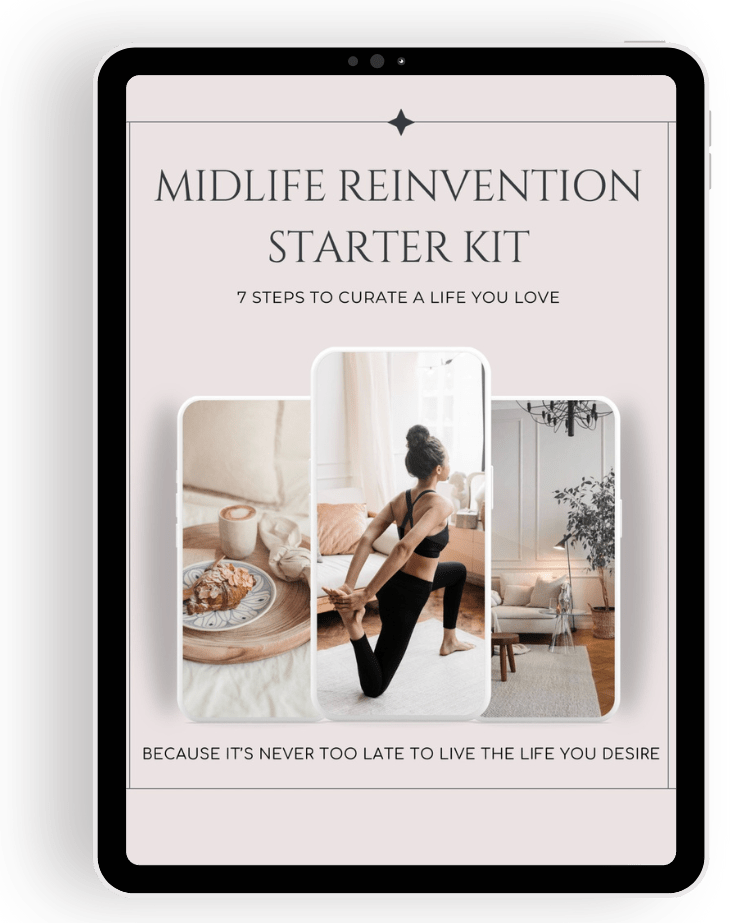Disclosure: This post may contain affiliate links and I may receive a commission if you purchase through them.
One of the most powerful steps you can take to improve your health, boost energy levels, and prevent chronic diseases is to meal prep. In this post, I share how to help you get started on your meal prep journey plus an easy template to think about when you’re grocery shopping or planning meals for next week.

What is Meal Prepping?
The term meal prepping refers to when you make meals for the week on a schedule. The idea is that you’ll have healthy, nutritious meals on hand throughout the week, so you don’t have to worry about cooking or planning out your menu every single day.
Meal prepping simply means batch cooking a week’s worth of meals in advance. There’s no “one size fits all” when preparing meals. One person’s routine may not be the best routine for another person. The trick is to find the perfect routine for you and your family.
Batch cooking is all about planning out quick and healthy meals and preparing them for an easy, convenient, grab-and-go menu.
Meal prepping is convenient, efficient, reduces waste, and reduces the temptation to eat outside your plan (whether the plan is a diet or a budget). Having a healthy meal ready to enjoy can help you say no to unhealthy food choices.
Foods that work well for meal prepping:
- cooked grains & pasta
- cooked beans
- roasted vegetables
- hearty fresh vegetables (think celery, carrots, peas, bell peppers, kale, cabbage, radishes, etc.)
- whole fruit (apples, oranges, stone fruit)
- nuts & seeds
- cheese
- sauces and dips (like salad dressings, hummus, salsa, sour cream, etc.)
Benefits of Meal Prepping
There are many excellent benefits of meal prepping, including:
Money-Saving: When you plan your meals, you’re more careful about what you buy. There’s also less waste, which means you’re saving money in the long run.
Time-Saving: Preparing your meals in advance frees up your time during the week for other things. You won’t have to spend every night in the kitchen cooking, so you’re able to focus on the things and people you love.
Healthier eating: Since your meals are prepared and stored separately, it’s easier to manage portion control and stick to healthy eating. You can also choose more nutritious meals to make in advance so that you won’t be tempted to munch on junk food or order takeout.
Stress-reducing: Having all of your meals ready for the week can reduce your stress and worry about what to buy or what to cook for yourself and your family. You’ll also feel confident knowing you have something to eat every day and don’t need to make a last-minute trip to the grocery store.
Types of Meal Prepping
Make-ahead meals: Cook a complete meal in advance, then store it in the fridge or freezer. These meals can easily be reheated during dinner, making them fast and easy to serve and enjoy.
Batch cooking: This type of meal prep includes making a large batch of a recipe that you can separate into individual portions. Simply freeze each portion, then enjoy it as a meal over a span of a few months, which is optimum for a warm lunch or dinner.
Ready-to-cook ingredients: By preparing the ingredients needed for specific meals in advance, you can reduce your cooking time significantly.
Individually portioned meals: This method involves making fresh meals and portioning them into smaller sizes that you can grab when you’re on the go. They’re refrigerated and eaten over the span of a few days, which makes it easy to have a quick lunch.
Assemble ahead meals: From burritos to lasagna, making a complete meal in advance and storing it in the fridge allows you to simply pop it in the oven when it’s dinnertime.

How to get started with meal prepping
Start with Your Schedule
When determining which days you want to cook at home, consider your schedule during the week. Remember to give yourself flexibility when planning. If you have a big event or activity on your calendar one day during the week, plan to eat takeout or make an easy-to-prepare meal at home that day. Once you have finalised your schedule for the week, identify which days you plan to cook at home.
Choose Your Recipes
When picking out recipes for your meal plan, start by looking at which ingredients you already have at home. Which ingredients can you use from your pantry, refrigerator and freezer to help reduce food waste and shorten your grocery list?

Think through your meal plan for breakfast, lunch, dinner and snacks. Don’t overcomplicate it. Utilise leftovers when possible. Note whether you need to pack lunches for work or school, or if you plan to rely on pre-packaged lunch options like salad kits.
When choosing recipes for dinner, be realistic and honest about your preferences. If you like cooking simple meals, stick with recipes with shorter ingredient lists and steps. Consider using healthy, pre-prepared meals when possible. If you enjoy cooking, consider choosing only one time-intensive recipe for the week so you aren’t overwhelmed.

Make Your Grocery List
Once you have your meal plan for the week, make a grocery list. Consider the grocery shopping strategy that works best for you and your family. Do you prefer to buy groceries every day or only once a week? Do you prefer planning out a meal plan for the whole month and going to the grocery store for one bulk shopping trip? When writing your list, think of ways to be resourceful. As it’s just me, I don’t freeze any food I cook, I usually make just enough for a day or two at max. I will batch cook granola for a couple of weeks, I bake bread 2-3 times a week, I prefer to use leeks over onions, so I will cut them up and put them in a container and use it throughout the week.

Go Grocery Shopping
To save time when grocery shopping, consider taking advantage of click & collect or grocery delivery. Personally, I prefer to go to the local Farmers’ Market to buy seasonal produce & grocery store to buy everything else on Saturdays.

Start Prepping
Once you have your ingredients, decide how much meal prepping your schedule allows and determine when you want to meal prep. Do you prefer to block off an afternoon on the weekend to wash and chop your produce and cook certain ingredients in advance to use in recipes throughout the week?
If you prefer to block off a large amount of time to meal prep on a certain day, plan on eating some of the food you prep for dinner that day, or a pre-prepared meal to make dinner more manageable. Another option is to meal prep while you are already in the kitchen making dinner; when you cut an onion, chop two onions and package the second to store in the refrigerator or freezer for later use.
Meal planning takes some time, but with intention, it can be feasible. Break up your tasks into smaller pieces to make meal planning achievable. For weekly or monthly meal planning, consider planning recipes one day, grocery shopping the next day and meal prepping another day. Find a system that works for you and your family to incorporate healthy meals into your life.
This is what works for me:
- Meal Plan for the coming week on a Friday
- Grocery Shopping on a Saturday
- Meal-prepping on a Sunday
I batch-cook 3 to 4 dinners twice a week and it has been the best thing I’ve done for Khushi & I in a very long time. There’s no stress when it comes to what to cook every day and with both being leading busy lives, knowing that there are healthy and nourishing meals already in the fridge waiting for us is simply pure bliss.


Feel free to sign up to my Friday Morning Love Note HERE! This isn’t just a newsletter - it’s your invitation to pause, reflect, and realign with you. Every week, we’ll journey together to uncover the small, meaningful shifts that will help you design a life that feels uniquely and beautifully yours. Each week, I’ll deliver fresh intentions, uplifting tips, and simple shifts to inspire purposeful, creative living.






[…] Meal prep […]
[…] Meal prep […]